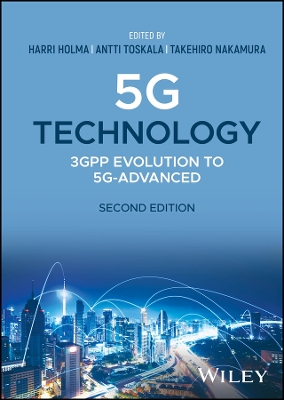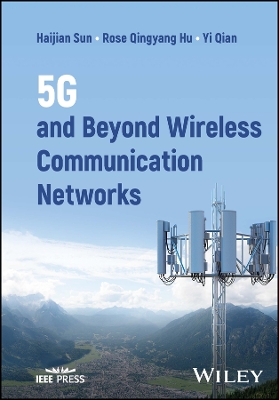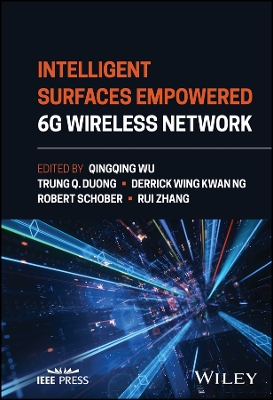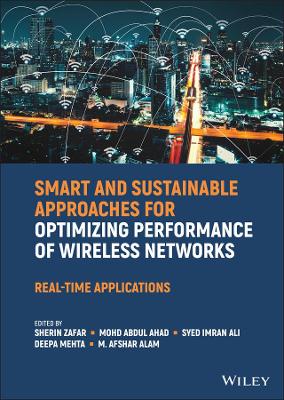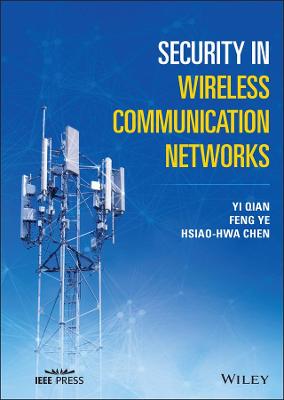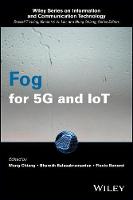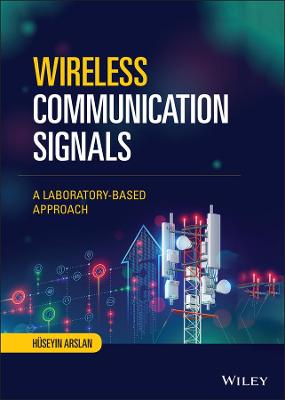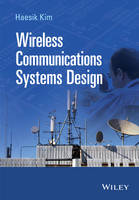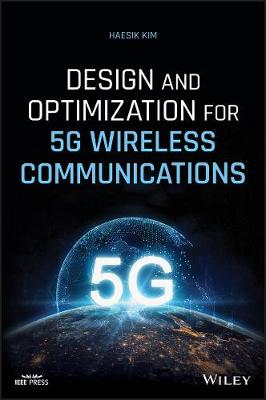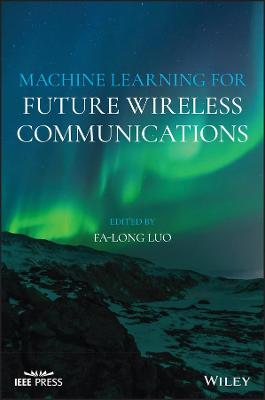Mobility Models for Next Generation Wireless Networks
 -15%
portes grátis
-15%
portes grátis
Mobility Models for Next Generation Wireless Networks
Ad Hoc, Vehicular and Mesh Networks
Santi, Paolo
John Wiley & Sons Inc
07/2012
374
Dura
Inglês
9781119992011
15 a 20 dias
608
About the Author xxv
Preface xxvii
Acknowledgments xxxiii
List of Abbreviations xxxv
Part I INTRODUCTION
1 Next Generation Wireless Networks 3
1.1 WLAN and Mesh Networks 5
1.2 Ad Hoc Networks 8
1.3 Vehicular Networks 10
1.4 Wireless Sensor Networks 13
1.5 Opportunistic Networks 14
2 Modeling Next Generation Wireless Networks 19
2.1 Radio Channel Models 20
2.2 The Communication Graph 26
2.3 The Energy Model 31
3 Mobility Models for Next Generation Wireless Networks 33
3.1 Motivation 33
3.2 Cellular vs. Next Generation Wireless Network Mobility Models 35
3.3 A Taxonomy of Existing Mobility Models 38
3.4 Mobility Models and Real-World Traces: The CRAWDAD Resource 43
3.5 Basic Definitions 45
Part II "GENERAL-PURPOSE" MOBILITY MODELS
4 Random Walk Models 51
4.1 Discrete Random Walks 52
4.2 Continuous Random Walks 55
4.3 Other Random Walk Models 57
4.4 Theoretical Properties of Random Walk Models 58
5 The Random Waypoint Model 61
5.1 The RWP Model 62
5.2 The Node Spatial Distribution of the RWP Model 64
5.3 The Average Nodal Speed of the RWP Model 69
5.4 Variants of the RWP Model 73
6 Group Mobility and Other Synthetic Mobility Models 75
6.1 The RPGM Model 76
6.2 Other Synthetic Mobility Models 83
7 Random Trip Models 89
7.1 The Class of Random Trip Models 89
7.2 Stationarity of Random Trip Models 93
7.3 Examples of Random Trip Models 94
Part III MOBILITY MODELS FOR WLAN AND MESH NETWORKS
8 WLAN and Mesh Networks 101
8.1 WLAN and Mesh Networks: State of the Art 101
8.2 WLAN and Mesh Networks: User Scenarios 107
8.3 WLAN and Mesh Networks: Perspectives 109
8.4 Further Reading 111
9 Real-World WLAN Mobility 113
9.1 Real-World WLAN Traces 113
9.2 Features of WLAN Mobility 116
10 WLAN Mobility Models 121
10.1 The LH Mobility Model 122
10.2 The KKK Mobility Model 129
10.3 Final Considerations and Further Reading 137
Part IV MOBILITY MODELS FOR VEHICULAR NETWORKS
11 Vehicular Networks 141
11.1 Vehicular Networks: State of the Art 141
11.2 Vehicular Networks: User Scenarios 146
11.3 Vehicular Networks: Perspectives 150
11.4 Further Reading 151
12 Vehicular Networks: Macroscopic and Microscopic Mobility Models 153
12.1 Vehicular Mobility Models: The Macroscopic View 154
12.2 Vehicular Mobility Models: The Microscopic View 156
12.3 Further Reading 157
13 Microscopic Vehicular Mobility Models 159
13.1 Simple Microscopic Mobility Models 159
13.2 The SUMO Mobility Model 164
13.3 Integrating Vehicular Mobility and Wireless Network Simulation 168
Part V MOBILITY MODELS FOR WIRELESS SENSOR NETWORKS
14 Wireless Sensor Networks 175
14.1 Wireless Sensor Networks: State of the Art 175
14.2 Wireless Sensor Networks: User Scenarios 180
14.3 WSNs: Perspectives 183
14.4 Further Reading 184
15 Wireless Sensor Networks: Passive Mobility Models 185
15.1 Passive Mobility in WSNs 186
15.2 Mobility Models for Wildlife Tracking Applications 187
15.3 Modeling Movement Caused by External Forces 191
16 Wireless Sensor Networks: Active Mobility Models 197
16.1 Active Mobility of Sensor Nodes 198
16.2 Active Mobility of Sink Nodes 208
Part VI MOBILITY MODELS FOR OPPORTUNISTIC NETWORKS
17 Opportunistic Networks 217
17.1 Opportunistic Networks: State of the Art 217
17.2 Opportunistic Networks: User Scenarios 219
17.3 Opportunistic Networks: Perspectives 222
17.4 Further Reading 223
18 Routing in Opportunistic Networks 225
18.1 Mobility-Assisted Routing in Opportunistic Networks 225
18.2 Opportunistic Network Mobility Metrics 231
19 Mobile Social Network Analysis 237
19.1 The Social Network Graph 238
19.2 Centrality and Clustering Metrics 239
19.3 Characterizations of Human Mobility 244
19.4 Further Reading 250
20 Social-Based Mobility Models 251
20.1 The Weighted Random Waypoint Mobility Model 252
20.2 The Time-Variant Community Mobility Model 254
20.3 The Community-Based Mobility Model 256
20.4 The SWIM Mobility Model 259
20.5 The Self-Similar Least Action Walk Model 264
20.6 The Home-MEG Model 267
20.7 Further Reading 270
Part VII CASE STUDIES
21 Random Waypoint Model and Wireless Network Simulation 275
21.1 RWP Model and Simulation Accuracy 276
21.2 Removing the Border Effect 278
21.3 Removing Speed Decay 285
21.4 The RWP Model and "Perfect Simulation" 287
22 Mobility Modeling and Opportunistic Network Performance Analysis 293
22.1 Unicast in Opportunistic Networks 293
22.2 Broadcast in Opportunistic Networks 299
Appendix A Elements of Probability Theory 309
A.1 Basic Notions of Probability Theory 309
A.2 Probability Distributions 313
A.3 Markov Chains 317
Appendix B Elements of Graph Theory, Asymptotic Notation, and Miscellaneous Notions 323
B.1 Asymptotic Notation 323
B.2 Elements of Graph Theory 326
B.3 Miscellaneous Notions 330
References 333
Index 335
About the Author xxv
Preface xxvii
Acknowledgments xxxiii
List of Abbreviations xxxv
Part I INTRODUCTION
1 Next Generation Wireless Networks 3
1.1 WLAN and Mesh Networks 5
1.2 Ad Hoc Networks 8
1.3 Vehicular Networks 10
1.4 Wireless Sensor Networks 13
1.5 Opportunistic Networks 14
2 Modeling Next Generation Wireless Networks 19
2.1 Radio Channel Models 20
2.2 The Communication Graph 26
2.3 The Energy Model 31
3 Mobility Models for Next Generation Wireless Networks 33
3.1 Motivation 33
3.2 Cellular vs. Next Generation Wireless Network Mobility Models 35
3.3 A Taxonomy of Existing Mobility Models 38
3.4 Mobility Models and Real-World Traces: The CRAWDAD Resource 43
3.5 Basic Definitions 45
Part II "GENERAL-PURPOSE" MOBILITY MODELS
4 Random Walk Models 51
4.1 Discrete Random Walks 52
4.2 Continuous Random Walks 55
4.3 Other Random Walk Models 57
4.4 Theoretical Properties of Random Walk Models 58
5 The Random Waypoint Model 61
5.1 The RWP Model 62
5.2 The Node Spatial Distribution of the RWP Model 64
5.3 The Average Nodal Speed of the RWP Model 69
5.4 Variants of the RWP Model 73
6 Group Mobility and Other Synthetic Mobility Models 75
6.1 The RPGM Model 76
6.2 Other Synthetic Mobility Models 83
7 Random Trip Models 89
7.1 The Class of Random Trip Models 89
7.2 Stationarity of Random Trip Models 93
7.3 Examples of Random Trip Models 94
Part III MOBILITY MODELS FOR WLAN AND MESH NETWORKS
8 WLAN and Mesh Networks 101
8.1 WLAN and Mesh Networks: State of the Art 101
8.2 WLAN and Mesh Networks: User Scenarios 107
8.3 WLAN and Mesh Networks: Perspectives 109
8.4 Further Reading 111
9 Real-World WLAN Mobility 113
9.1 Real-World WLAN Traces 113
9.2 Features of WLAN Mobility 116
10 WLAN Mobility Models 121
10.1 The LH Mobility Model 122
10.2 The KKK Mobility Model 129
10.3 Final Considerations and Further Reading 137
Part IV MOBILITY MODELS FOR VEHICULAR NETWORKS
11 Vehicular Networks 141
11.1 Vehicular Networks: State of the Art 141
11.2 Vehicular Networks: User Scenarios 146
11.3 Vehicular Networks: Perspectives 150
11.4 Further Reading 151
12 Vehicular Networks: Macroscopic and Microscopic Mobility Models 153
12.1 Vehicular Mobility Models: The Macroscopic View 154
12.2 Vehicular Mobility Models: The Microscopic View 156
12.3 Further Reading 157
13 Microscopic Vehicular Mobility Models 159
13.1 Simple Microscopic Mobility Models 159
13.2 The SUMO Mobility Model 164
13.3 Integrating Vehicular Mobility and Wireless Network Simulation 168
Part V MOBILITY MODELS FOR WIRELESS SENSOR NETWORKS
14 Wireless Sensor Networks 175
14.1 Wireless Sensor Networks: State of the Art 175
14.2 Wireless Sensor Networks: User Scenarios 180
14.3 WSNs: Perspectives 183
14.4 Further Reading 184
15 Wireless Sensor Networks: Passive Mobility Models 185
15.1 Passive Mobility in WSNs 186
15.2 Mobility Models for Wildlife Tracking Applications 187
15.3 Modeling Movement Caused by External Forces 191
16 Wireless Sensor Networks: Active Mobility Models 197
16.1 Active Mobility of Sensor Nodes 198
16.2 Active Mobility of Sink Nodes 208
Part VI MOBILITY MODELS FOR OPPORTUNISTIC NETWORKS
17 Opportunistic Networks 217
17.1 Opportunistic Networks: State of the Art 217
17.2 Opportunistic Networks: User Scenarios 219
17.3 Opportunistic Networks: Perspectives 222
17.4 Further Reading 223
18 Routing in Opportunistic Networks 225
18.1 Mobility-Assisted Routing in Opportunistic Networks 225
18.2 Opportunistic Network Mobility Metrics 231
19 Mobile Social Network Analysis 237
19.1 The Social Network Graph 238
19.2 Centrality and Clustering Metrics 239
19.3 Characterizations of Human Mobility 244
19.4 Further Reading 250
20 Social-Based Mobility Models 251
20.1 The Weighted Random Waypoint Mobility Model 252
20.2 The Time-Variant Community Mobility Model 254
20.3 The Community-Based Mobility Model 256
20.4 The SWIM Mobility Model 259
20.5 The Self-Similar Least Action Walk Model 264
20.6 The Home-MEG Model 267
20.7 Further Reading 270
Part VII CASE STUDIES
21 Random Waypoint Model and Wireless Network Simulation 275
21.1 RWP Model and Simulation Accuracy 276
21.2 Removing the Border Effect 278
21.3 Removing Speed Decay 285
21.4 The RWP Model and "Perfect Simulation" 287
22 Mobility Modeling and Opportunistic Network Performance Analysis 293
22.1 Unicast in Opportunistic Networks 293
22.2 Broadcast in Opportunistic Networks 299
Appendix A Elements of Probability Theory 309
A.1 Basic Notions of Probability Theory 309
A.2 Probability Distributions 313
A.3 Markov Chains 317
Appendix B Elements of Graph Theory, Asymptotic Notation, and Miscellaneous Notions 323
B.1 Asymptotic Notation 323
B.2 Elements of Graph Theory 326
B.3 Miscellaneous Notions 330
References 333
Index 335


